Figures & data
Figure 1. Estimated twenty-year cumulative CO2 equivalents (ECO2e) and twenty-year cumulative CO2 warming equivalents (ECO2we), calculated applying the global warming potential (GWP) and the global warming potential star (GWP*), respectively, on twenty-year methane emissions. Starting emission was 1 kt of CH4/year. (Adapted from Cady (Citation2020), with recalculated values).
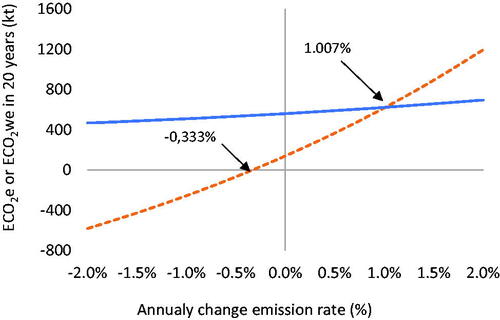
Figure 2. Livestock methane (CH4) emissions in kilotons (kt) from 1990 to 2020 (Romano et al. Citation2021) from International Panel on Climate Change (IPCC)’s emission category ‘enteric fermentation’ and ‘manure management systems’ (IPCC Citation2019).
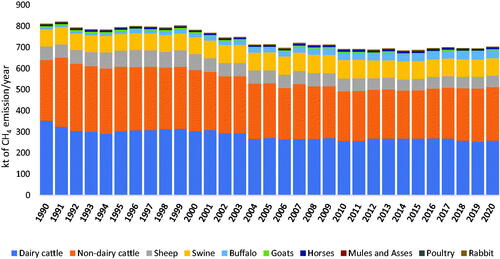
Figure 3. Methane (CH4) climate impact of Italian livestock for dairy cattle, non-dairy cattle and buffalo, from 2010 to 2020. Annual (left panel) and cumulative (rigth panel) methane emissions estimated as CO2 equivalents (ECO2e; blue solid lines) using the global warming potential (GWP), and as CO2 warming equivalents (ECO2we; orange dotted lines), calculated by global warming potential star (GWP*).
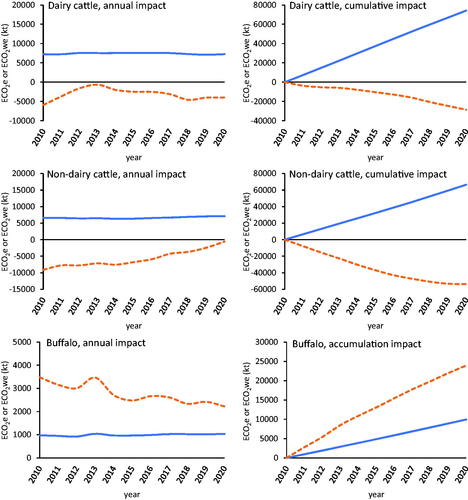
Figure 4. Methane (CH4) climate impact of Italian livestock for sheep and goat, from 2010 to 2020. Annual (left panel) and cumulative (rigth panel) methane emissions estimated as CO2 equivalents (ECO2e; blue solid lines) using the global warming potential (GWP), and as CO2 warming equivalents (ECO2we; orange dotted lines), calculated by global warming potential star (GWP*).
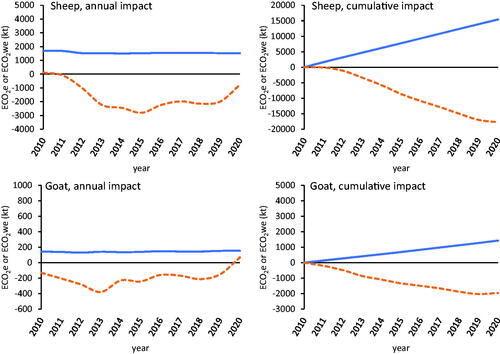
Figure 5. Methane (CH4) climate impact of Italian livestock for swine, horses, and mules and asses, from 2010 to 2020. Annual (left panel) and cumulative (rigth panel) methane emissions estimated as CO2 equivalents (ECO2e; blue solid lines) using the global warming potential (GWP), and as CO2 warming equivalents (ECO2we; orange dotted lines), calculated by global warming potential star (GWP*).
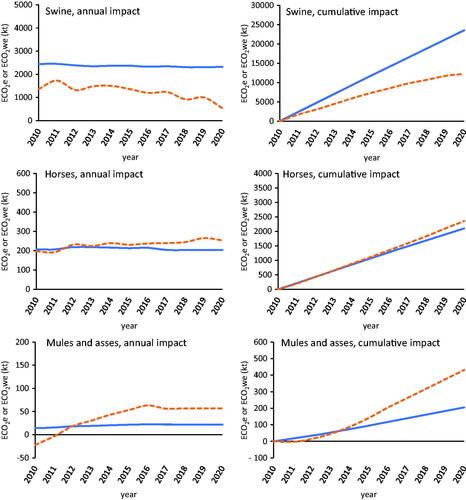
Figure 6. Methane (CH4) climate impact of Italian livestock for poultry and rabbits, from 2010 to 2020. Annual (left panel) and cumulative (rigth panel) methane emissions estimated as CO2 equivalents (ECO2e; blue solid lines) using the global warming potential (GWP), and as CO2 warming equivalents (ECO2we; orange dotted lines), calculated by global warming potential star (GWP*).
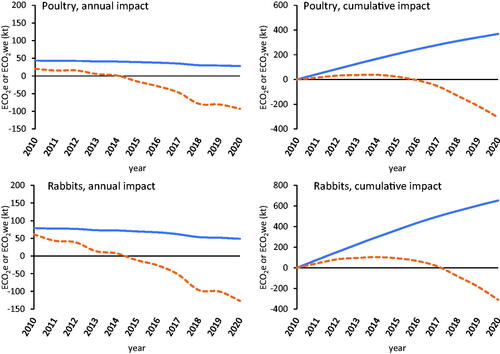
Figure 7. Total methane (CH4) climate impact of Italian livestock (dairy cattle, non-dairy cattle, buffalo, sheep, goat, swine, horses, mule and asses, poultry, rabbits) from 2010 to 2020. Annual (left panel) and cumulative (rigth panel) methane emissions estimated as CO2 equivalents (ECO2e; blue solid lines) using the global warming potential (GWP), and as CO2 warming equivalents (ECO2we; orange dotted lines), calculated by global warming potential star (GWP*).
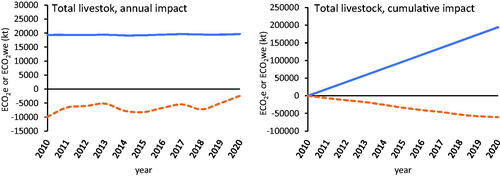
Table 1. Total methane (CH4) emissions of Italian livestock (dairy cattle, non-dairy cattle, buffalo, sheep, goat, swine, horses, mule and asses, poultry, and rabbits) from 1991 to 2020 (Romano et al. Citation2021) and methane climate impact from 2010 to 2020 calculated with global warming potential (GWP) and global warming potential star (GWP*) metrics.
Table 2. Nitrous oxide (N2O) GWP of Italian livestock (dairy cattle, non-dairy cattle, buffalo, sheep, goat, swine, horses, mule and asses, poultry, and rabbits) from 2010 to 2020 (Romano et al. Citation2021) and methane (CH4) + N2O climate impact from 2010 to 2020 calculated with global warming potential (GWP) and global warming potential star (GWP*) metrics.
Table 3. Time series of Italian livestock from 1991 to 2020 (head × 1000) (Romano et al. Citation2021).
Figure 8. Trend of the dairy cattle consistency (number of head × 1000, dark green line) and cow’s milk yield (tons × 1000, yellow line) in Italy from 2002 to 2020. (Romano et al. Citation2021; ISTAT Citation2021).
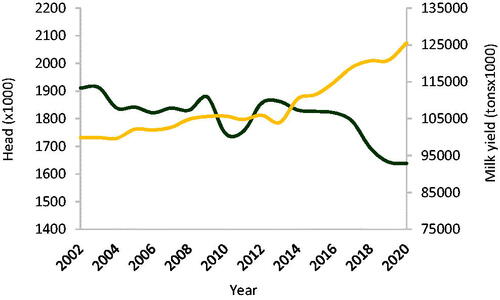
Data availability statement
The authors confirm that the data supporting the findings of this study are available within the article.
